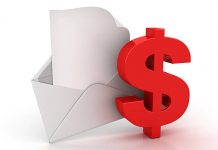Markets had a stellar week with equity indices banging out record highs on both sides of the Atlantic. Hence the divergence in macroeconomic prospects was not reflective in their respective flagship equity indices. The S&P 500 and Nasdaq broke all-time highs with better than expected retail sales and jobless claims. STOXX Europe 600 had done so previously. Equity implied volatility, the VIX and VSTOXX index, printed their lowest readings since the Corona Crisis erupted in February 2020.
US long dated yields drifted lower, down 15 bps from their highs, in an apparent break from the surge mounted since the beginning of the year. The Bund traded sideways.
The euro has had a good run against the greenback in April and the cross flirted with the 1,20 level before backing down in the face of strong US macro data in the form of retail sales and jobless claims. For cross asset views see Armchair Strategist, 16 April.
China’s economic growth continues to moderate. The year on year GDP growth rate of 18.3 percent was grossly inflated by comparing the economy to a time when COVID had depressed the economy. A more reflective figure was quarterly GDP growth, which slowed down to 0.6 percent compared to 2.6 percent in the previous quarter.
Inflation has been a prominent source of market consternation. March US CPI inflation came in stronger than expected. The headline figure was 2.6 % year on year up from a previous figure of 1.7 % and an expectation of 2.5 %. Month on month the increase was 0.6 % driven by a significant 0.3 % increase in core inflation. Interestingly the drive in inflation came from services and not goods inflation, which remained muted despite impending logistical troubles.
Fed heavyweights, Powell, Clarida and Williams, re-iterated that the Fed wants to see actual inflation rather than pre-empting a probable rise in inflation, which was the paradigm before. As we head into a summer of inflated inflation prints, it is useful to remind oneself that inflation is by definition a persistent rise in prices. A mere base effects or transitory demand supply imbalance will not be deemed a real rise in inflation. They also stated that monetary policy will follow the post-GFC playbook, that tapering will precede rate hikes.
There is currently a large difference between the Fed’s current signal (no rate hikes through 2023) and market expectations (the first full rate hike is priced in by early 2023). We still believe the Fed will turn more hawkish within the next six months.
The ECB meeting on Thursday will be an appetizer for the June meeting. We expect the growth outlook to be ‘broadly balanced’ paving the way for the PEPP purchase pace going back to February levels around EUR60bn after the June meeting. We think Lagarde will repeat the ‘delayed and not derailed’ recovery narrative. For the reader with a larger ECB appetite, they can read our full ECB preview: An appetizer for the June meeting.
Euro Area April flash PMIs published on Friday should indicate that the pace of economic recovery has moderated. After the strong readings in Q1, manufacturing PMI may fall back, in line with Chinese PMI whereas service PMIs should still move upwards.















